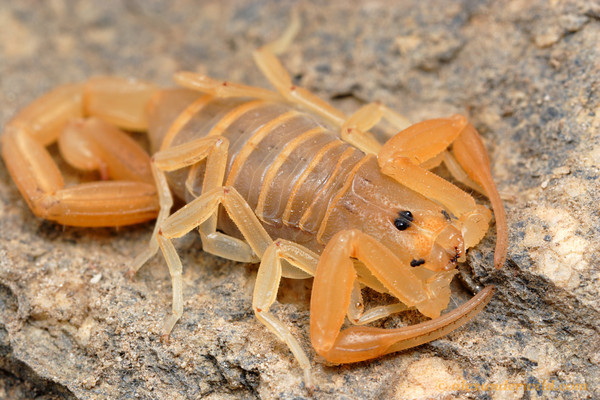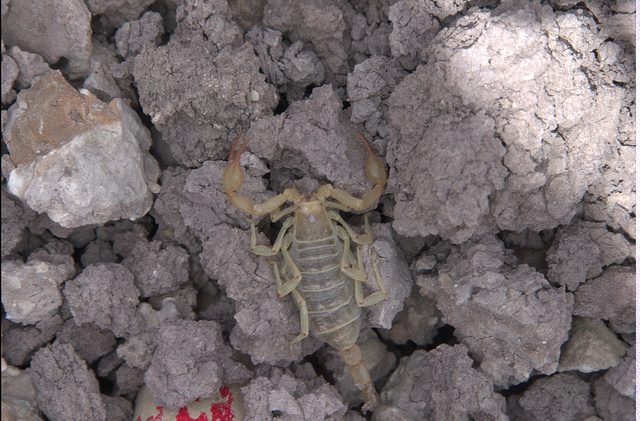Adaptation
Evolved characteristics
Scorpions have a pair of grasping claws called pedipalps, a small pair of appendages right by the mouth called chelicerae, four pairs of walking legs, and a tail. Scorpion pedipalps are just like mini forms of Homarus americanus (lobster) claws! The body is divided into two regions, the cephalothorax and the abdomen. The Arizona Bark Scorpion is characterized by weak, finger-like pedipalps, and a lengthy sub-triangular sternum. While many species of scorpions burrow into the ground, C. sculpturatus does not burrow, which explains the evolution of its weak claws. In fact, this species is found to even climb various objects such as trees, walls, or even decks.
Photo credit Alex Wild
Evading Predators
Like many other organisms, C. sculpturatus has adapted in ways to hide from predators. The yellowish-brown coloring helps the Arizona Bark Scorpion blend in with sand, rocks, and tree bark. To compensate for poor eyesight, fine hairs on their underside and legs help sense when predators are around. These tactics enable C. sculpturatus to evade predators such as owls, bats, mice, lizards, snakes, and tarantulas. They can usually scurry away, or even use their venomous stinger in defense if predators attack.
Photo credit Daniel Arndt
Venom
Each species of scorpion has its own unique blend of venom. Venom is made of up neurotoxins and other various chemicals that generally either paralyze or kill targeted prey. When injected with venom from C. sculpturatus, uncontrolled or repeated firing of nerves will occur within the victim. If injected with enough venom, the complete loss of ability to fire nerves can occur, which results in paralysis. Venom from C. sculpturatus is comprised mainly of a family of neurotoxins that affect the sodium ion channels and potassium ion channels. The effects of the neurotoxins cause the inward flow of the sodium ion current to be prolonged, which in turn stalls and minimizes the exiting potassium ion current. Check out Chironex fleckeri, commonly called the box jellyfish, to learn about one of the most venomous organisms in the world!
Photo credit Wikimedia Commons
Keep going to find out about the nutrition of C. sculpturatus!
Get back to the main page by clicking here!



